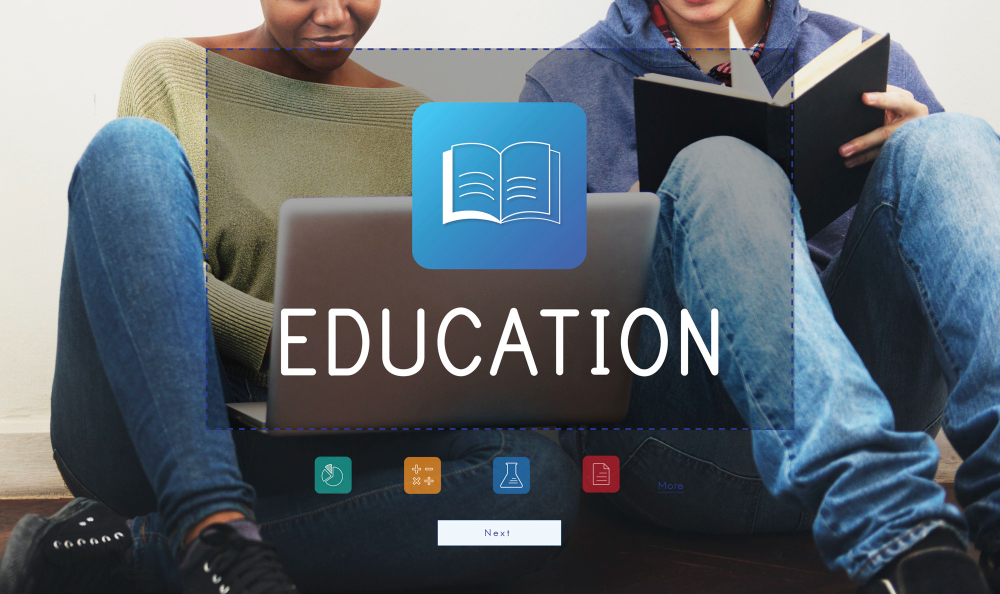Revolutionizing Learning: How to Get the Best Educational Software Development Services (A Detailed Guide)

The education sector is experiencing a seismic shift driven by the constant evolution of technology. Educational software is no longer a relic of the past – it’s a critical component of modern learning, offering interactive experiences, personalized learning paths, and improved accessibility for students of all backgrounds and abilities. But with a saturated market of educational software development companies vying for your business, how do you navigate this landscape and find the perfect partner to transform your vision into reality?
This comprehensive guide will equip you with the knowledge and strategies to secure the best educational software development services for your specific needs.
Unveiling Your Educational Software Needs: A Self-Discovery Mission
Before embarking on your quest for the ideal development company, take a moment for introspection and define your goals with laser focus. Here are some key questions to consider, acting as your compass on this journey:
- Target Audience: Who are you crafting this software for? Is it aimed at K-12 students, university learners, corporate training programs, or perhaps a blend of these demographics? Each audience possesses unique learning styles and needs. Tailoring your software to resonate with their specific preferences will be crucial for its success.
- Learning Objectives: What specific knowledge or skills do you want your users to gain from the experience? Is it focused on core curriculum subjects like math and science, professional development for a specific industry, or specialized training in a niche field? Clearly defining learning objectives acts as the blueprint for the software’s functionality.
- Software Type: Do you envision developing a Learning Management System (LMS) to manage online courses and track student progress? Perhaps an adaptive learning platform that personalizes learning paths based on individual needs is more suitable. Or maybe a gamified app is the key to making learning engaging and interactive? Understanding the type of software you need aligns development efforts with your vision.
- Features and Functionality: What specific features are essential for your software? Incorporating gamification features such as points, badges, and leaderboards has the potential to enhance user engagement. Interactive exercises, assessment tools, progress tracking, collaborative features, and multimedia elements all play a role in crafting a robust learning experience. Prioritizing the features that best support your learning objectives is key.
- Budget: Software development costs can vary significantly depending on the complexity of your project. Be realistic and determine a budget that aligns with your needs. Breaking down your desired features into tiers of “must-haves” and “nice-to-haves” can help prioritize functionalities within your budget constraints.
Identifying Your Ideal Educational Software Development Partner: Casting a Wide Net
Once you have a clear vision for your educational software, it’s time to find the perfect development partner. Here are some crucial steps to take in your search:
- Research and Reviews: Delve into the world of potential companies with expertise in educational software development. Utilize industry publications, online directories, and educational technology association websites to create a shortlist. Look for companies with a proven track record and glowing client reviews from satisfied customers. These reviews can offer valuable insights into the company’s development process, communication style, and overall client satisfaction.
Sifting Through the Options: Project Portfolio Power
- Portfolio Review: Don’t underestimate the power of the development company’s portfolio. Carefully examine their past projects, focusing on those similar to your vision. Assess the quality of their work, the types of software they specialize in, and the target audiences they cater to. This will offer valuable clues about their design aesthetic, user interface (UI) development skills, and their ability to deliver software that resonates with your target audience.
Seeking the Right Expertise: Qualifications and Certifications
- Expertise and Certifications: Don’t settle for anything less than a team of experienced developers well-versed in educational technology. Look for a company with developers who possess certifications in specific educational software platforms (e.g., Learning Tools Interoperability – LTI) or development methodologies (e.g., Agile). Certifications demonstrate the team’s commitment to continuous learning and expertise in the ever-evolving world of educational technology.
Building a Bridge of Communication: Finding the Right Fit
- Communication and Collaboration: Seek a company that values clear communication and ongoing collaboration throughout the project lifecycle. Look for a development team that actively listens to your needs, provides regular updates on progress, and welcomes your feedback. Clear communication fosters a strong working relationship and ensures your vision remains at the forefront of the development process.
Crafting a Winning Project Proposal: A Roadmap to Success
To attract the best educational software development companies, create a well-defined project proposal that outlines your vision in meticulous detail. Here are some key elements to ensure your proposal is compelling and informative:
- Executive Summary: Provide a concise overview of your project, captivating the reader’s attention with the target audience, learning objectives, and desired software type. Briefly explain the problem your software aims to solve or the learning gap it intends to bridge.
- Detailed Needs Assessment: This section is your opportunity to delve deeper into the functionalities and features you envision for your software. Feel free to get specific! Include details like:
- The learning activities you want users to engage in (e.g., simulations, quizzes, interactive exercises)
- The types of assessments you want to incorporate (e.g., multiple-choice quizzes, open-ended essays, performance-based tasks)
- The reporting and analytics features that will provide valuable insights into user progress and learning outcomes
- Any specific integrations you require with existing educational platforms or learning management systems
- Technical Specifications: If you have any technical requirements (e.g., specific programming language, compatibility needs with existing systems, mobile responsiveness), include them in this section. This will help developers determine the feasibility of your project and provide accurate estimates.
- Project Timeline and Budget: Outline a realistic timeline for project completion, taking into account the complexity of your software. Be transparent about your budget range, allowing developers to tailor their proposals accordingly.
- Success Metrics: How will you measure the success of your educational software? Define key performance indicators (KPIs) to track user engagement, learning outcomes, and overall effectiveness. Instances of Key Performance Indicators (KPIs) might encompass:
- Completion rates for learning modules
- Scores on assessments
- User satisfaction surveys
- knowledge retention rates Increase
The Art of Negotiation and Contract Signing: Securing Your Ideal Partner
Once you have shortlisted a few qualified developers, it’s time to discuss project details and pricing. Here are some negotiation practices to keep in mind to ensure a mutually beneficial agreement:
- Clearly Define Scope of Work: The contract serves as the cornerstone of your working relationship with the development company. Ensure the contract clearly outlines the scope of work, including deliverables, timelines, revision processes, and acceptance criteria. A well-defined scope of work prevents misunderstandings and keeps the project on track.
- Pricing Structure: Negotiate a pricing structure that aligns with your budget and project complexity. Hourly rates, fixed-cost contracts, or milestone-based payments are common options. Hourly rates offer flexibility but can be less predictable in terms of total cost. Fixed-cost contracts provide cost certainty but may require flexibility on your end if changes arise during development. Milestone-based payments offer a balance, with payments tied to the completion of specific project phases.
- Intellectual Property Rights: The contract should clearly define ownership of the intellectual property (IP) created during development. Will you own the entire codebase, or will the development company retain ownership of certain elements? Ensuring clear ownership rights avoids future disputes.
- Support and Maintenance: Discuss post-development support and maintenance options. How will the company address bugs, updates, and future feature enhancements? Negotiate a support plan that aligns with your needs and budget. Consider including warranty periods for bug fixes and technical support.
Building a Successful Partnership: Collaboration is Key
Finding the right development partner is just the first step. Here’s how to cultivate a successful collaboration and ensure your educational software reaches its full potential:
- Clear Communication: Ensure that communication remains open and transparent at all stages of the project. Regularly discuss progress with the development team, address challenges collaboratively, and provide timely feedback. Schedule regular meetings, utilize project management tools, and encourage clear and concise communication throughout the development process.
- Agile Development: Consider adopting an agile development methodology. This allows for iterative development, where the software is built in small, functional increments. Regular user testing and feedback loops ensure the final product aligns with your vision and meets user needs.
- Testing and Quality Assurance: Prioritize rigorous testing throughout the development lifecycle. Implement automated testing tools alongside manual testing by qualified individuals. Thorough testing ensures the software is bug-free, user-friendly, and meets all your learning objectives.
Conclusion
By following these steps and carefully selecting the right educational software development partner, you can transform your vision for educational technology into reality. Remember, the journey to creating impactful educational software is a collaborative effort. By clearly defining your needs, conducting thorough research, and nurturing a strong partnership with the development team, you can create a learning experience that empowers, engages, and inspires your target audience.






